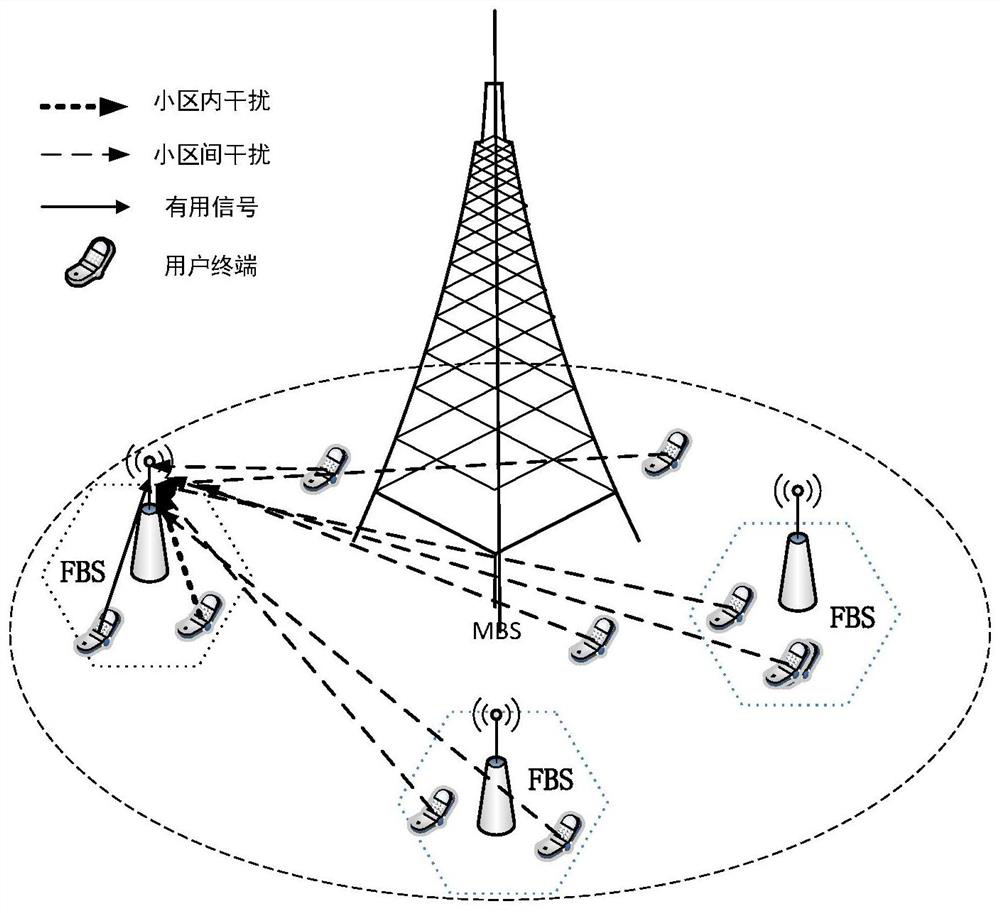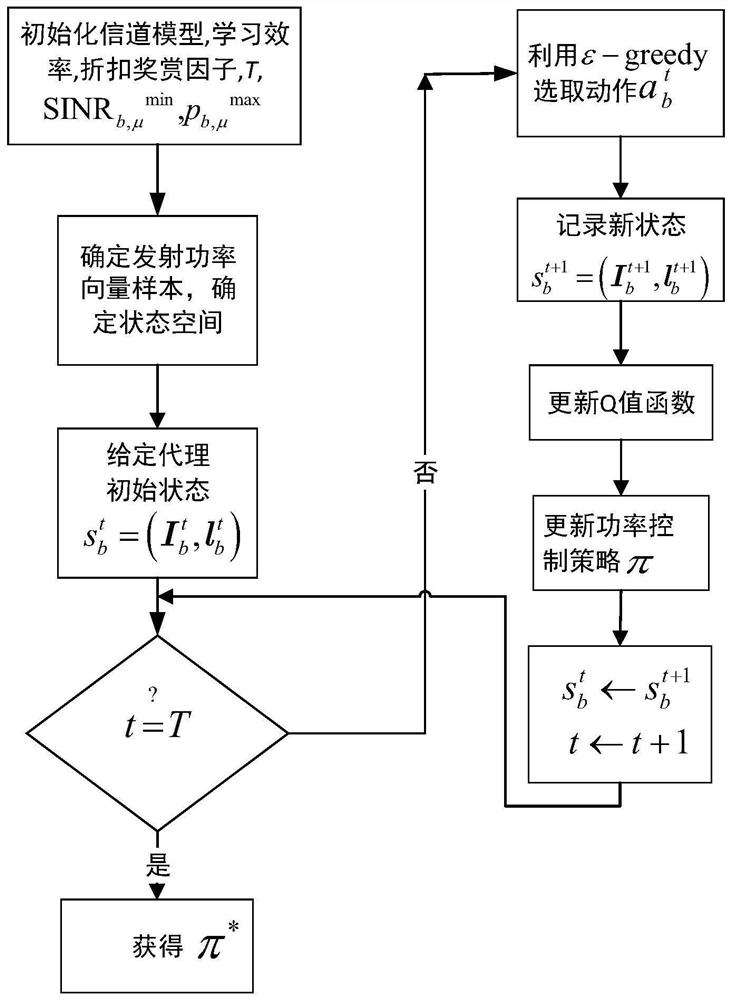Femtocell power control method based on q-learning
A femtocell and power control technology, applied in power management, wireless communication, electrical components, etc., to achieve the effect of solving excessive energy consumption
- Summary
- Abstract
- Description
- Claims
- Application Information
AI Technical Summary
Problems solved by technology
Method used
Image
Examples
Embodiment 1
[0041] like figure 1 As shown, this embodiment adopts a heterogeneous cellular network model. The system consists of a macro-cell and multiple femto cells. Users share the same spectrum bandwidth W. When users communicate with base stations, they will Interference from users in the same cell (intra-cell interference) and interference from users in other cells (inter-cell interference). The present invention studies the energy efficiency optimization problem of femto cells, and defines the user throughput per unit power as the user energy efficiency η b,μ , define the sum of user energy efficiency in the femtocell as the cell energy efficiency η b .
[0042]
[0043]
[0044] The present invention introduces the minimum received signal signal-to-interference-noise ratio SINR under the consideration of intra-cell and inter-cell interference b,μ min and the user's maximum transmit power p b,μ max As a constraint condition, with the energy efficiency of the community a...
Embodiment 2
[0055] like image 3 As shown, the present invention updates the Q function according to the incremental summation expression of the Q function, and the expression is specifically in, Indicates that the control entity is in network state s at time slot t+1 b Select transmit power action a b The state-action value function of ; Indicates that the controlling entity is in network state s b Take transmit power action a b System energy efficiency value after return; s' b Indicates that the controlling entity is in network state s b Select transmit power action a b , the new state in which it is located; a' b Indicates the network state s' b The corresponding transmit power action below, α represents the learning efficiency, and γ represents the discount reward factor.
Embodiment 3
[0057] In this embodiment, on the basis of the foregoing embodiments, the detailed steps for implementing the transmit power control of the user terminal in this embodiment are as follows:
[0058] Step 1 Set the channel model (bandwidth, gain, etc.), and SINR b,μ min , p b,μ max, γ, α and other initial information; determine the transmit power level of the femto cell user terminal (that is, determine the agent’s action space A b ); Set the total execution steps as T;
[0059] As an optional manner, in the present invention, α=0.1, γ=0.9, and T=1000 are set.
[0060] Step 2 takes the transmit power level of the user terminal as a sample of the transmit power vector (that is, the action of the agent, hereinafter referred to as action), the user terminal sends a signal to the base station, and the base station measures the uplink interference and signal interference corresponding to each transmit power vector according to the received signal A vector of noise ratio coeffici...
PUM
 Login to View More
Login to View More Abstract
Description
Claims
Application Information
 Login to View More
Login to View More - R&D
- Intellectual Property
- Life Sciences
- Materials
- Tech Scout
- Unparalleled Data Quality
- Higher Quality Content
- 60% Fewer Hallucinations
Browse by: Latest US Patents, China's latest patents, Technical Efficacy Thesaurus, Application Domain, Technology Topic, Popular Technical Reports.
© 2025 PatSnap. All rights reserved.Legal|Privacy policy|Modern Slavery Act Transparency Statement|Sitemap|About US| Contact US: help@patsnap.com



